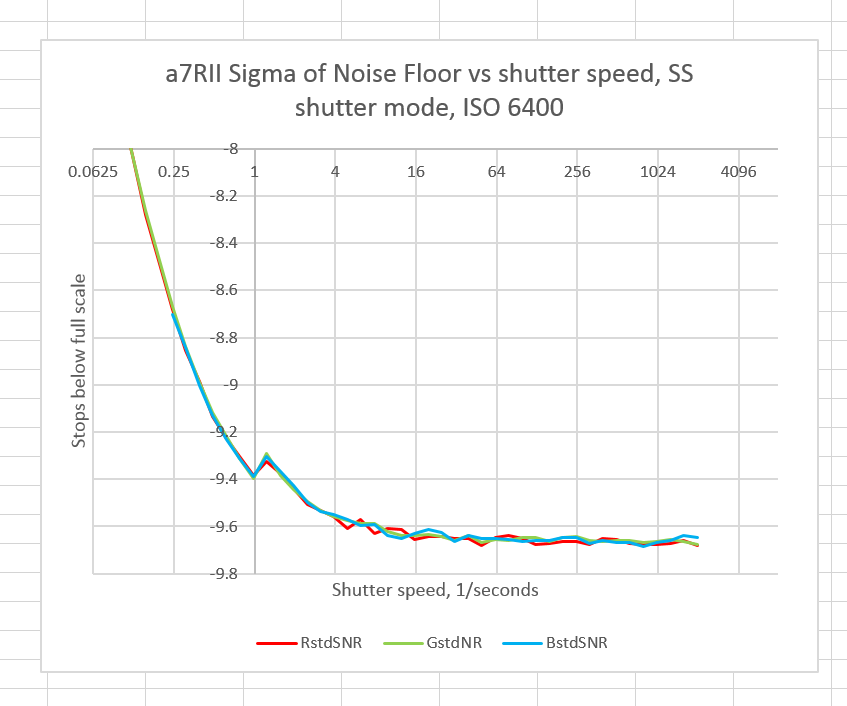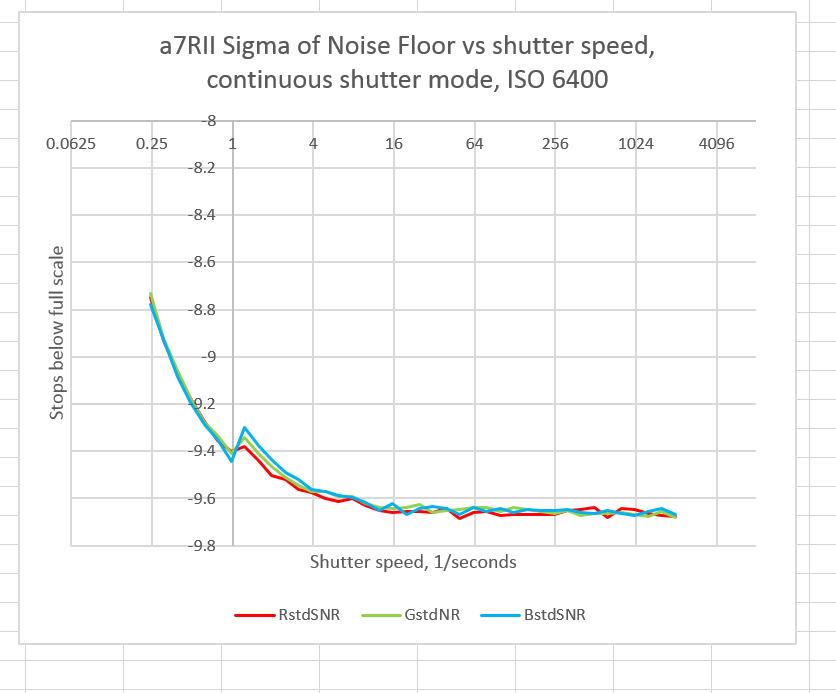I set the shutter to single shot, the ISO to 6400, turned off all the noise reduction options that the a7RII exposes to the user, and made a series of dark-field exposures at shutter speeds in 1/3 stop intervals from 1/2000 until boredom set in. Here’s the way the read noise varied:
You can see the camera applying some kind of noise reduction at shutter speeds of 1 second and slower. This undefeatable, gratuitous noise reduction is not unique to the a7RII; I’ve seen it in other alpha 7 cameras. Nor is it unique to Sony; I’ve seen it in Nikons.
That doesn’t mean I have to like it.
In continuous mode, here’s what we see:
Same thing. Note that at ISO 6400, the sensor-referred read noise is sufficiently large that the 12 bit precision and noisier ADC in continuous mode makes no difference in the overall noise level.


You did turn off the long exposure noise reduction right? I am just noting that that type of noise reduciton is applied in long exposure i.e. exposure longer than 1 seocnd for example….
AS I said in the post, I turned off all user-controllable noise reduction. That includes LENR.
Jim
Is this why I saw a “star gobbler” thread a while ago where Sony was cleaning up stars during long exposure night shots? Is there any way around this to get the best night sky/milky way pictures with the Sony FF cameras? I currently use an A7 and have just started experimenting with night sky starscapes.
Probably.
Stack 30-second exposures. That also reduces noise.
Jim